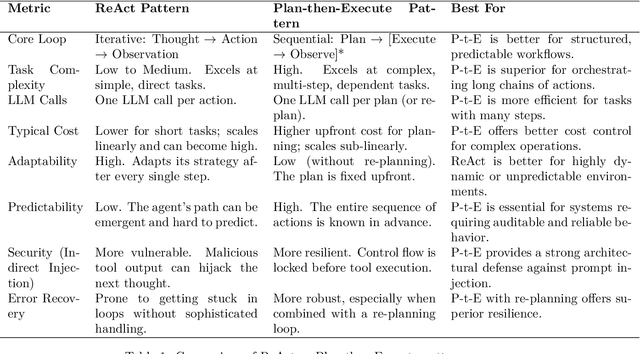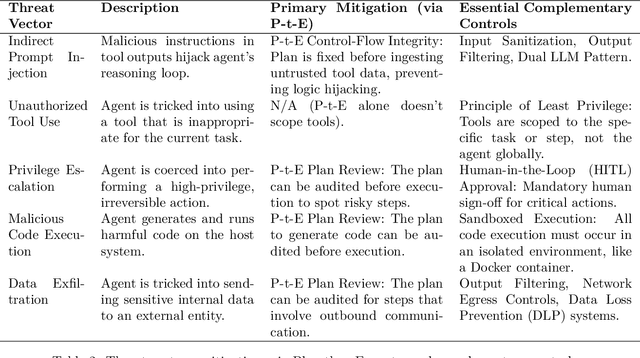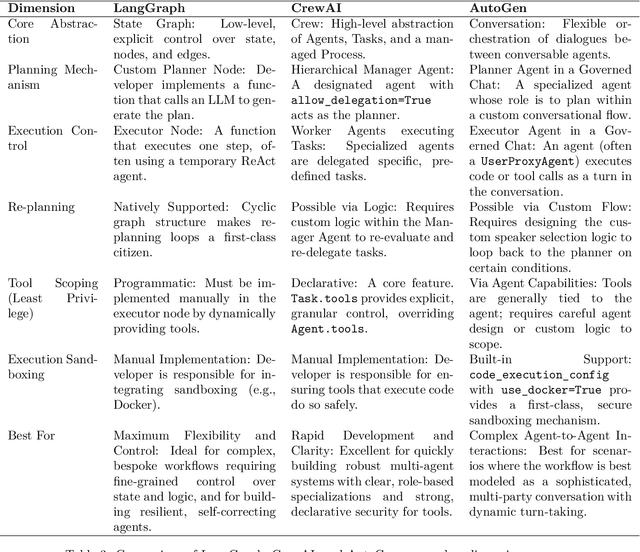Christian Schroeder de Witt
Michael Pokorny
DEEDEE: Fast and Scalable Out-of-Distribution Dynamics Detection
Oct 24, 2025Abstract:Deploying reinforcement learning (RL) in safety-critical settings is constrained by brittleness under distribution shift. We study out-of-distribution (OOD) detection for RL time series and introduce DEEDEE, a two-statistic detector that revisits representation-heavy pipelines with a minimal alternative. DEEDEE uses only an episodewise mean and an RBF kernel similarity to a training summary, capturing complementary global and local deviations. Despite its simplicity, DEEDEE matches or surpasses contemporary detectors across standard RL OOD suites, delivering a 600-fold reduction in compute (FLOPs / wall-time) and an average 5% absolute accuracy gain over strong baselines. Conceptually, our results indicate that diverse anomaly types often imprint on RL trajectories through a small set of low-order statistics, suggesting a compact foundation for OOD detection in complex environments.
h1: Bootstrapping LLMs to Reason over Longer Horizons via Reinforcement Learning
Oct 08, 2025Abstract:Large language models excel at short-horizon reasoning tasks, but performance drops as reasoning horizon lengths increase. Existing approaches to combat this rely on inference-time scaffolding or costly step-level supervision, neither of which scales easily. In this work, we introduce a scalable method to bootstrap long-horizon reasoning capabilities using only existing, abundant short-horizon data. Our approach synthetically composes simple problems into complex, multi-step dependency chains of arbitrary length. We train models on this data using outcome-only rewards under a curriculum that automatically increases in complexity, allowing RL training to be scaled much further without saturating. Empirically, our method generalizes remarkably well: curriculum training on composed 6th-grade level math problems (GSM8K) boosts accuracy on longer, competition-level benchmarks (GSM-Symbolic, MATH-500, AIME) by up to 2.06x. Importantly, our long-horizon improvements are significantly higher than baselines even at high pass@k, showing that models can learn new reasoning paths under RL. Theoretically, we show that curriculum RL with outcome rewards achieves an exponential improvement in sample complexity over full-horizon training, providing training signal comparable to dense supervision. h1 therefore introduces an efficient path towards scaling RL for long-horizon problems using only existing data.
Architecting Resilient LLM Agents: A Guide to Secure Plan-then-Execute Implementations
Sep 10, 2025


Abstract:As Large Language Model (LLM) agents become increasingly capable of automating complex, multi-step tasks, the need for robust, secure, and predictable architectural patterns is paramount. This paper provides a comprehensive guide to the ``Plan-then-Execute'' (P-t-E) pattern, an agentic design that separates strategic planning from tactical execution. We explore the foundational principles of P-t-E, detailing its core components - the Planner and the Executor - and its architectural advantages in predictability, cost-efficiency, and reasoning quality over reactive patterns like ReAct (Reason + Act). A central focus is placed on the security implications of this design, particularly its inherent resilience to indirect prompt injection attacks by establishing control-flow integrity. We argue that while P-t-E provides a strong foundation, a defense-in-depth strategy is necessary, and we detail essential complementary controls such as the Principle of Least Privilege, task-scoped tool access, and sandboxed code execution. To make these principles actionable, this guide provides detailed implementation blueprints and working code references for three leading agentic frameworks: LangChain (via LangGraph), CrewAI, and AutoGen. Each framework's approach to implementing the P-t-E pattern is analyzed, highlighting unique features like LangGraph's stateful graphs for re-planning, CrewAI's declarative tool scoping for security, and AutoGen's built-in Docker sandboxing. Finally, we discuss advanced patterns, including dynamic re-planning loops, parallel execution with Directed Acyclic Graphs (DAGs), and the critical role of Human-in-the-Loop (HITL) verification, to offer a complete strategic blueprint for architects, developers, and security engineers aiming to build production-grade, resilient, and trustworthy LLM agents.
Open Challenges in Multi-Agent Security: Towards Secure Systems of Interacting AI Agents
May 04, 2025Abstract:Decentralized AI agents will soon interact across internet platforms, creating security challenges beyond traditional cybersecurity and AI safety frameworks. Free-form protocols are essential for AI's task generalization but enable new threats like secret collusion and coordinated swarm attacks. Network effects can rapidly spread privacy breaches, disinformation, jailbreaks, and data poisoning, while multi-agent dispersion and stealth optimization help adversaries evade oversightcreating novel persistent threats at a systemic level. Despite their critical importance, these security challenges remain understudied, with research fragmented across disparate fields including AI security, multi-agent learning, complex systems, cybersecurity, game theory, distributed systems, and technical AI governance. We introduce \textbf{multi-agent security}, a new field dedicated to securing networks of decentralized AI agents against threats that emerge or amplify through their interactionswhether direct or indirect via shared environmentswith each other, humans, and institutions, and characterize fundamental security-performance trade-offs. Our preliminary work (1) taxonomizes the threat landscape arising from interacting AI agents, (2) surveys security-performance tradeoffs in decentralized AI systems, and (3) proposes a unified research agenda addressing open challenges in designing secure agent systems and interaction environments. By identifying these gaps, we aim to guide research in this critical area to unlock the socioeconomic potential of large-scale agent deployment on the internet, foster public trust, and mitigate national security risks in critical infrastructure and defense contexts.
REAL: Benchmarking Autonomous Agents on Deterministic Simulations of Real Websites
Apr 15, 2025Abstract:We introduce REAL, a benchmark and framework for multi-turn agent evaluations on deterministic simulations of real-world websites. REAL comprises high-fidelity, deterministic replicas of 11 widely-used websites across domains such as e-commerce, travel, communication, and professional networking. We also release a benchmark consisting of 112 practical tasks that mirror everyday complex user interactions requiring both accurate information retrieval and state-changing actions. All interactions occur within this fully controlled setting, eliminating safety risks and enabling robust, reproducible evaluation of agent capability and reliability. Our novel evaluation framework combines programmatic checks of website state for action-based tasks with rubric-guided LLM-based judgments for information retrieval. The framework supports both open-source and proprietary agent systems through a flexible evaluation harness that accommodates black-box commands within browser environments, allowing research labs to test agentic systems without modification. Our empirical results show that frontier language models achieve at most a 41% success rate on REAL, highlighting critical gaps in autonomous web navigation and task completion capabilities. Our framework supports easy integration of new tasks, reproducible evaluation, and scalable data generation for training web agents. The websites, framework, and leaderboard are available at https://realevals.xyz and https://github.com/agi-inc/REAL.
Multi-Agent Security Tax: Trading Off Security and Collaboration Capabilities in Multi-Agent Systems
Feb 26, 2025Abstract:As AI agents are increasingly adopted to collaborate on complex objectives, ensuring the security of autonomous multi-agent systems becomes crucial. We develop simulations of agents collaborating on shared objectives to study these security risks and security trade-offs. We focus on scenarios where an attacker compromises one agent, using it to steer the entire system toward misaligned outcomes by corrupting other agents. In this context, we observe infectious malicious prompts - the multi-hop spreading of malicious instructions. To mitigate this risk, we evaluated several strategies: two "vaccination" approaches that insert false memories of safely handling malicious input into the agents' memory stream, and two versions of a generic safety instruction strategy. While these defenses reduce the spread and fulfillment of malicious instructions in our experiments, they tend to decrease collaboration capability in the agent network. Our findings illustrate potential trade-off between security and collaborative efficiency in multi-agent systems, providing insights for designing more secure yet effective AI collaborations.
Fundamental Limitations in Defending LLM Finetuning APIs
Feb 20, 2025



Abstract:LLM developers have imposed technical interventions to prevent fine-tuning misuse attacks, attacks where adversaries evade safeguards by fine-tuning the model using a public API. Previous work has established several successful attacks against specific fine-tuning API defences. In this work, we show that defences of fine-tuning APIs that seek to detect individual harmful training or inference samples ('pointwise' detection) are fundamentally limited in their ability to prevent fine-tuning attacks. We construct 'pointwise-undetectable' attacks that repurpose entropy in benign model outputs (e.g. semantic or syntactic variations) to covertly transmit dangerous knowledge. Our attacks are composed solely of unsuspicious benign samples that can be collected from the model before fine-tuning, meaning training and inference samples are all individually benign and low-perplexity. We test our attacks against the OpenAI fine-tuning API, finding they succeed in eliciting answers to harmful multiple-choice questions, and that they evade an enhanced monitoring system we design that successfully detects other fine-tuning attacks. We encourage the community to develop defences that tackle the fundamental limitations we uncover in pointwise fine-tuning API defences.
Multi-Agent Risks from Advanced AI
Feb 19, 2025



Abstract:The rapid development of advanced AI agents and the imminent deployment of many instances of these agents will give rise to multi-agent systems of unprecedented complexity. These systems pose novel and under-explored risks. In this report, we provide a structured taxonomy of these risks by identifying three key failure modes (miscoordination, conflict, and collusion) based on agents' incentives, as well as seven key risk factors (information asymmetries, network effects, selection pressures, destabilising dynamics, commitment problems, emergent agency, and multi-agent security) that can underpin them. We highlight several important instances of each risk, as well as promising directions to help mitigate them. By anchoring our analysis in a range of real-world examples and experimental evidence, we illustrate the distinct challenges posed by multi-agent systems and their implications for the safety, governance, and ethics of advanced AI.
PSyDUCK: Training-Free Steganography for Latent Diffusion
Jan 31, 2025



Abstract:Recent advances in AI-generated steganography highlight its potential for safeguarding the privacy of vulnerable democratic actors, including aid workers, journalists, and whistleblowers operating in oppressive regimes. In this work, we address current limitations and establish the foundations for large-throughput generative steganography. We introduce a novel approach that enables secure and efficient steganography within latent diffusion models. We show empirically that our methods perform well across a variety of open-source latent diffusion models, particularly in generative image and video tasks.
Humanity's Last Exam
Jan 24, 2025Abstract:Benchmarks are important tools for tracking the rapid advancements in large language model (LLM) capabilities. However, benchmarks are not keeping pace in difficulty: LLMs now achieve over 90\% accuracy on popular benchmarks like MMLU, limiting informed measurement of state-of-the-art LLM capabilities. In response, we introduce Humanity's Last Exam (HLE), a multi-modal benchmark at the frontier of human knowledge, designed to be the final closed-ended academic benchmark of its kind with broad subject coverage. HLE consists of 3,000 questions across dozens of subjects, including mathematics, humanities, and the natural sciences. HLE is developed globally by subject-matter experts and consists of multiple-choice and short-answer questions suitable for automated grading. Each question has a known solution that is unambiguous and easily verifiable, but cannot be quickly answered via internet retrieval. State-of-the-art LLMs demonstrate low accuracy and calibration on HLE, highlighting a significant gap between current LLM capabilities and the expert human frontier on closed-ended academic questions. To inform research and policymaking upon a clear understanding of model capabilities, we publicly release HLE at https://lastexam.ai.
 Add to Chrome
Add to Chrome Add to Firefox
Add to Firefox Add to Edge
Add to Edge